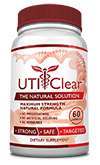
The Difference Between Urinary Tract Infections and Sexually Transmitted Diseases
Urinary Tract Infections and Sexually Transmissible Diseases often mimic each other and it is difficult to tell the difference. In this article, we will discuss what these two infections are, which symptoms can be experienced and what should be done to treat them.
Urinary tract infections (UTIs) are very common, particularly in women, babies and the elderly. Around 1 in 2women and 1 in 20 men will get a UTI at some point in their life. The kidneys control the amount of water in the blood and filter out waste products to form urine. Each kidney has a tube called a ureter, which joins the kidney to the bladder. The urine leaves the kidneys through the ureters and enters the bladder. The bladder ‘signals’ the urge to urinate and urine leaves the body through a tube called the urethra. The urinary system is designed to minimize the risk of serious infection in the kidneys and it does this by preventing the urine from flowing back up into the kidneys. The majority of urinary tract infections are confined to the bladder and while they cause painful symptoms, they are not serious or life threatening.
Symptoms
- A burning feeling when you urinate
- A frequent or intense urge to urinate, even though little comes out when you do
- Pain or pressure in your back or lower abdomen
- Cloudy, dark, bloody, or strange-smelling urine
- Feeling tired or shaky
- Fever or chills
Sexually transmissible diseases (STDs) are infections that can be passed from one person to another by having vaginal, anal or oral sex. Most STDs are transmitted through the exchange of sexual fluids and genital contact. STDs can cause a wide range of health problems, from mild irritations to more serious illness. Pregnant women with an STD can pass it on to their unborn child. Some STDs are easily cured with antibiotics if detected early, but can cause long-term problems if left untreated.
Symptoms
- Sores or blisters on the genitals, on or around the anus, or mouth
- Irregular growths or warts on the genital area
- Vaginal or penile discharge which may be unusual-smelling or discoloured
- Genital itching
- Pain when urinating or having a bowel movement
- Pain during intercourse
- Vaginal bleeding or spotting after sexual intercourse
- Lower abdominal pain
- Pain or swelling of the glands in the groin area
- Rash
Treatment of both UTIs and STDs
The doctor will look into the medical history of the patient and according to that will examine the pelvic. The doctor might want a sample of the urine and if the results show a bacterial infection, the patient will be put on a course of antibiotics. Infections like chlamydia and gonorrhoea are treatable through antibiotics. However, if the test shows the HIV virus or herpes then the doctor will put the patient on an antiviral medication.
It is possible to get a UTI from sex and the trouble is that UTIs and STDs mimic each other. The symptoms might be similar and therefore it is recommended that one consults a doctor in the case of discomfort.
TOP 5
URINARY TRACT INFECTIONTreatments |
|||||
| UTI Clear | Urizol | Native Remedies UTI-Clear | Nutrition Depot Urinary Tract Support | Pure Encapsulations Cranberry NS | |
|---|---|---|---|---|---|
| 1 | 2 | 3 | 4 | 5 | |
| Price (1 bottle) Price (6 bottles) Best Value |
$49.95 $139.80 |
$47.95 $287.70 |
$29.95 $179.70 |
$30.00 $180.00 |
$27.00 $162.00 |
| Overall Rating | 99.30% | 77.0% | 72.50% | 63.20% | 61.50% |
| Effectiveness |





|





|





|





|





|
| Speed of Results | Extremely Fast | Good | Average | Slow | Slow |
| Quality of Ingredients | Premium | Good | Average | Average | Average |
| Customer Satisfaction Evaluation | 99.40% | 76.50% | 74.20% | 67.10% | 60.5% |
| Safety Evaluation | Safe for Use | Safe for Use | Safe for Use | Safe for Use | Safe for Use |
| Customer Service Rating |





|





|





|





|





|
| Reorder Rate | Highest | Good | Good | Average | Average |
| Return Policy | Risk Free | Risk Free | Good | Unopened & Restocking Fee | 30 Days + Fee |
| Success Rate | 99.60% | 78.30% | 74% | 71.10% | 68.50% |

 Subscribe Now
Subscribe Now










